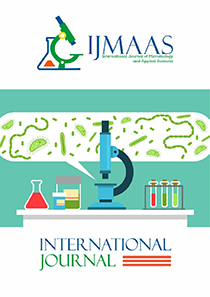Assessment of Fungal Involvement in the Production of Bioethanol from Agro-Waste
Vol 3, Issue 1, 2024
KEYWORDS
Cassava peels, fermentation, bioethanol, microorganisms, distillation, Aspergillus niger, Saccharomyces cerevisiae
Abstract
The challenges of agricultural solid waste in the environment are on the rise in Nigeria and most developing countries. Fungi play a pivotal role in fermenting lignocellulosic biomass into bioethanol offering a renewable alternative to fossil fuels. Cassava peels, an agro-waste contains cellulose, which is quite high at 42.626% content; a potential a raw material for bioethanol production. This study investigated the involvement of fungi in the production of bioethanol from cassava peels. Fungi employed were Saccharomyces cerevisiae and Aspergillus niger. Cassava peels collected from a cassava-processing plant were prepared by washing to remove sand and dirt. Washed peels were then sun-dried for seven days to remove moisture and ground into flour. The flour was thereafter cooked to slurry, filtered and autoclaved at 1210C for 15 minutes. Aspergillus niger and Saccharomyces cerevisiae were separately used as inoculants for the fermentation of the sterilized slurry for three days. The fermented broth was thereafter distillated. Results showed that the total ethanol produced from the sample with Aspergillus niger was 41.7% while the total ethanol produced from the sample with Saccharomyces cerevisiae was 58.7%. Total ethanol yield by Saccharomyces cerevisiae was higher than that of Aspergillus niger. The characteristics of the bioethanol produced recorded a pH of 6.71, the distillation range was 78-100, and the flash point was obtained at 24oC. The results showed that Aspergillus niger and Saccharomyces cerevisiae were able to degrade and ferment starches in cassava peels to produce ethanol. Production of bioethanol from agrowaste will contribute to the economy of any nation while riding the environment of solid waste.
Current: Vol. 4, Issue 1, 2025

Call for papers
The International Journal of Microbiology and Applied Sciences warmly welcome your valuable articles for publication.
